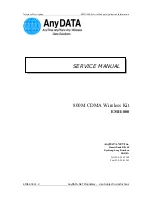
190-01263-01 Rev. A
Garmin G2000 Pilot’s Guide for the Cessna T240
SY
STEM
O
VER
VIEW
FLIGHT
INSTRUMENTS
EIS
AUDIO
& CNS
FLIGHT
MANA
GEMENT
HAZARD
AV
OID
ANCE
AFCS
ADDITIONAL
FEA
TURES
APPENDICES
INDEX
597
Appendix d
Normal (oBS not activated)
• Automatic sequencing of waypoints
• Manual course change on HSI not possible
• Always navigates ‘TO’ the active waypoint
• Must be in this mode for final approach
course
oBS
• Manual sequencing - ‘holds’ on selected
waypoint
• Manually select course to waypoint from
HSI
• Indicates ‘TO’ or ‘FROM’ waypoint
• Cannot be set for final approach course or
published holding patterns
W
Hy
migHt
tHe
SyStem
not
aUtomatically
SeqUence
to
tHe
neXt
WayPoint
?
The system only sequences flight plan waypoints when automatic sequencing is enabled (i.e., no ‘OBS’ or
‘SUSP’ annunciation on the HSI). For automatic sequencing to occur, the aircraft must also cross the
bisector
of
the turn being navigated. The bisector is a line passing through the waypoint common to two flight plan legs
at an equal angle from each leg.
W
Hen
DoeS
tUrn
anticiPation
Begin
?
The system smooths adjacent leg transitions based on a normal 15° bank angle (with the ability to roll up to
30°) and provides three pilot cues for turn anticipation:
• A waypoint alert (‘Next DTK ###° in # seconds’ or ‘Next HDG ###° in # seconds’) appears on the PFD 10
seconds before the turn point and flashes as it counts down to zero.
• A flashing turn advisory (‘Turn [right/left] to ###° in # seconds’) appears on the PFD 10 seconds before the
turn and flashes as it counts down to zero. ‘Turn [right/left] to ###° now’ or ‘Next [DTK/HDG] to ###° now’
is displayed when the pilot is to begin the turn and the HSI (GPS mode) automatically sequences to the next
DTK or HDG value.
• The To/From indicator on the HSI flips momentarily to indicate the midpoint of the turn has been crossed.
W
Hen
DoeS
tHe
cDi
Scale
cHange
?
Once a departure is activated, the system Course Deviation Indicator (CDI) full scale deflection is set to 0.3
nm. The CDI scale changes to 1.0 nm (terminal mode) then ramps up to 2.0 nm (enroute mode) at 30 nm
from the departure airport. When 31 nm from the destination, the CDI scale smoothly transition from 2.0 nm
back to 1.0 nm (terminal mode). At 2.0 nm before the FAF during an active approach, the CDI scale transitions
down further based on the type of approach activated (LNAV, LNAV/VNAV, LPV). When a missed approach is
activated, the CDI is set to 0.3 nm. See the Flight Instruments Section for more details on CDI scaling.
W
Hy
DoeS
tHe
HSi
not
reSPonD
like
a
vor
WHen
oBS
moDe
iS
active
?
Unlike a VOR, the CDI scale used on GPS equipment is based on the crosstrack distance to the desired
course, not on the angular relationship to the destination. Therefore, the CDI deflection on the GPS is constant
regardless of the distance to the destination and does not become less sensitive when further away from the
destination.
This manual downloaded from http://www.manualowl.com














































